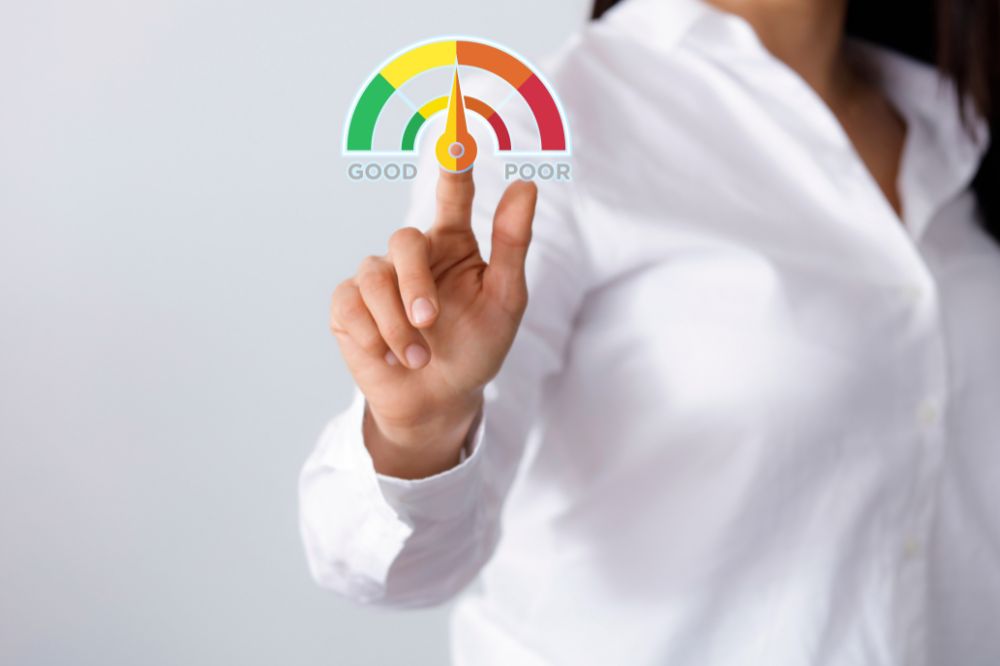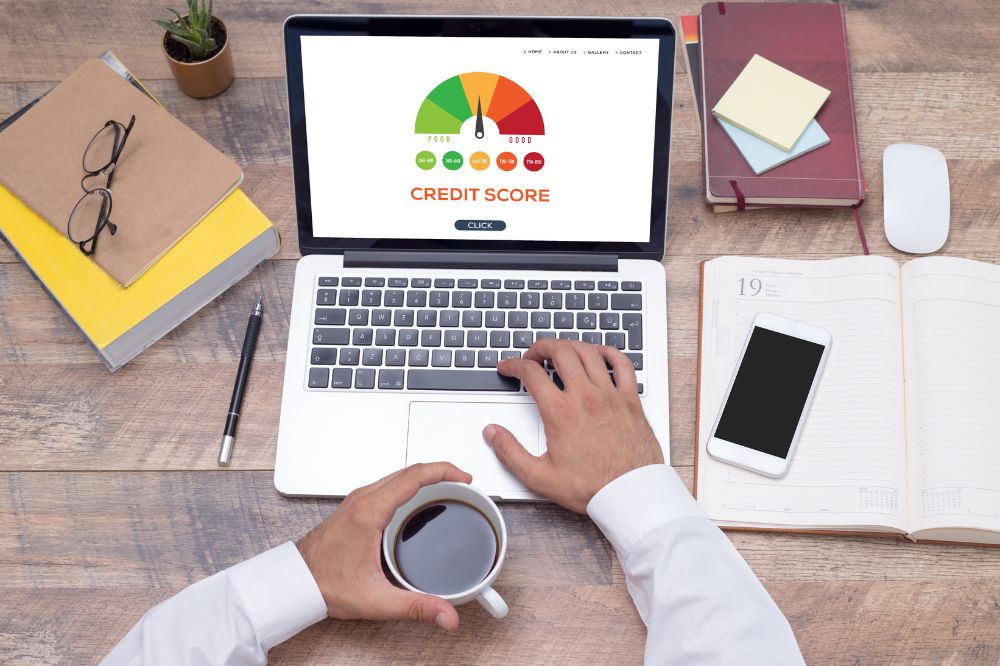Did you know that filing for insolvency, whether due to personal finances or company liquidation, can cause a significant drop in your credit score, affecting your overall creditworthiness? When facing insolvency, individuals often overlook the long-term consequences it has on their personal finances. Your credit score plays a crucial role in determining your ability to secure loans, mortgages, or even favorable interest rates with traditional lenders.
Insolvency can stay on your credit report for years, making it challenging to rebuild your credit history and regain lenders’ trust. Understanding how insolvency impacts your credit scores and creditworthiness is essential for making informed financial decisions in the future. Stay tuned as we delve deeper into the repercussions of insolvency, liquidation, on your financial well-being and credit score.
Key Takeaways
- Bankruptcy Impact: Understanding the implications of bankruptcy on credit scores and creditworthiness is crucial for informed financial decisions.
- Rebuilding Strategies: After bankruptcy, focus on rebuilding credit by creating a spending and savings plan tailored to your financial situation.
- Debt Management: Reduce debt wisely by exploring credit-building products and maintaining a disciplined approach to spending.
- Chapter 7 vs. Chapter 13: Differentiate between Chapter 7 and Chapter 13 bankruptcy to choose the option that aligns best with your financial goals.
- Credit Score Recovery: Implement a credit improvement timeline to track progress and enhance credit scores gradually post-bankruptcy.
- Long-Term Planning: Develop long-term strategies for credit repair by consistently monitoring credit reports and adopting responsible financial habits.
Understanding Bankruptcy
Types Explained
Bankruptcies, also known as insolvencies, come in various forms, each with distinct characteristics. Liquidation bankruptcy involves selling assets to pay off debts, while reorganization bankruptcy allows businesses to continue operating under a court-approved plan. The key difference lies in the approach to resolving debts.
In liquidation bankruptcies, assets are sold off to settle debts completely. On the other hand, reorganization bankruptcies involve restructuring debt repayment plans to allow businesses to continue operations. These types affect creditors and debtors differently.
Impact on Credit
Insolvency significantly impacts credit scores by leading to a sharp decline. When a person or business files for bankruptcy, their credit score takes a hit due to the inability to repay debts. This affects their ability to borrow money or access credit facilities due to their score.
Creditworthiness diminishes post-insolvency due to the increased risk perceived by lenders. Lenders may be hesitant to extend credit or loans due to the higher likelihood of default score. This can lead to higher interest rates or limited access to financial services for individuals with a low credit score.
Examples of how insolvency impacts credit include reduced credit limits, denial of loan applications, and higher interest rates on approved loans.

Duration of Impact
Insolvency stays on credit reports for different periods depending on the type filed. Chapter 7 liquidation bankruptcies remain on credit reports for up to ten years, while Chapter 13 reorganization bankruptcies stay for seven years. The duration varies based on the severity of the bankruptcy and credit score.
The negative impact of insolvency on credit score lasts for several years after filing. During this time, obtaining new lines of credit or loans may be challenging due to the stained credit score resulting from bankruptcy filings.
Factors that can shorten the impact duration include timely payments post-bankruptcy, responsible financial behavior, and proactive steps taken to rebuild credit through secured credit cards or small loans with manageable terms.
Credit Score After Bankruptcy
Immediate Effects
After bankruptcy, credit scores plummet significantly, impacting one’s ability to secure loans and credit cards. This sharp decline in creditworthiness can lead to higher interest rates on any approved credit. Financial activities such as obtaining new credit cards or loans may be restricted due to the negative impact of insolvency. Credit applications are often rejected or come with stringent terms and conditions post-bankruptcy.
Long-term Considerations
The long-term effects of insolvency on credit can linger for years, affecting one’s financial stability. Rebuilding credit post-insolvency requires patience and strategic planning. Developing a consistent payment history is crucial in improving credit scores over time. Avoiding further debt accumulation is key to enhancing creditworthiness and financial health in the long run. Long-term financial planning becomes essential to ensure sustainable financial well-being after bankruptcy.
Comparing Chapter 7 and 13
Key Differences
When considering Chapter 7 and Chapter 13, it’s crucial to note their distinct characteristics, including credit score. Chapter 7 involves the liquidation of assets to pay off debts, whereas Chapter 13 focuses on a repayment plan over several years. This disparity in approaches leads to different outcomes for individuals seeking debt relief.
Comparing insolvency with other credit issues reveals significant disparities. While late payments or defaults impact credit scores, insolvency has a more profound and enduring effect. Insolvency stays on credit reports for years, influencing future borrowing capabilities and financial opportunities.
Insolvency’s impact on credit is unique due to its long-term repercussions. Unlike minor credit issues that may be rectified relatively quickly, insolvency leaves a lasting mark on one’s financial history. This can hinder access to loans, mortgages, or favorable interest rates in the future.
Credit Score Effects
Insolvency significantly affects credit scores by causing a sharp decline post-filing. The severity of this decline depends on various factors such as the individual’s initial score and the amount of debt discharged through the insolvency process. This sudden drop can make it challenging to secure new lines of credit or loans.
After experiencing insolvency, individuals may notice fluctuations in their credit scores as they navigate the aftermath. It’s common for scores to gradually improve over time as responsible financial habits are established post-insolvency. Consistent timely payments and prudent credit utilization play key roles in rebuilding creditworthiness.
To enhance credit scores post-insolvency, individuals can take proactive steps such as regularly monitoring their credit reports for inaccuracies or discrepancies. By ensuring that all information is up-to-date and correct, individuals can prevent any errors from further impacting their credit standing positively.
Debt Discharge Implications
Effect on Creditworthiness
Insolvency significantly impacts creditworthiness by lowering credit scores due to missed payments and high debt levels. Post-insolvency, individuals face challenges in obtaining credit as lenders perceive them as high-risk borrowers. To improve creditworthiness, consistently make timely payments, keep credit card balances low, and avoid taking on new debt.
Rebuilding credit post-insolvency requires patience and discipline. Lenders may offer secured credit cards or small loans to help individuals demonstrate responsible financial behavior. Regularly monitoring credit reports for errors and disputing inaccuracies can also aid in improving creditworthiness over time.
Types of Discharged Debt
Common types of debt that can be discharged in insolvency include credit card debt, medical bills, personal loans, and utility bills. The process of discharging debt involves filing for bankruptcy under Chapter 7 or Chapter 13, depending on the individual’s financial situation.
When debt is discharged through insolvency, it means that the debtor is no longer legally obligated to repay it. However, discharged debt can impact credit scores negatively initially but offers a fresh start financially. It’s crucial to understand the implications of discharged debt on credit and financial future.
Credit Improvement Timeline
Post-Bankruptcy Recovery
After bankruptcy, individuals can rebuild their credit by obtaining a secured credit card to demonstrate responsible financial behavior. Creating a budget and sticking to it is crucial for managing finances effectively. Seeking financial counseling can provide valuable insights into money management strategies.
Resources like financial literacy programs and credit counseling services offer guidance on rebuilding credit post-bankruptcy. Developing a habit of making timely payments on debts and bills is essential for improving credit scores gradually. Setting achievable financial goals can help individuals stay motivated throughout the recovery process.
Monitoring Progress
Monitoring credit recovery progress is vital to track improvements and identify areas needing attention. Utilizing tools like credit monitoring services can help individuals keep track of their credit scores and reports regularly. Reviewing credit reports for inaccuracies or discrepancies is crucial in ensuring an accurate representation of one’s credit status.
Positive signs of progress in credit recovery include an increase in credit score, lower debt-to-income ratio, and fewer missed payments. Consistent efforts in maintaining good financial habits will reflect positively on one’s creditworthiness over time. Seeking guidance from financial experts or utilizing online resources can further aid in monitoring and enhancing one’s credit health.
Rebuilding Credit Strategies
Review Credit Reports
When it comes to reviewing credit reports, individuals must scrutinize them regularly for inaccuracies. By disputing errors promptly, one can prevent negative impacts on credit scores. Inaccuracies such as incorrect payment statuses or unauthorized accounts can significantly harm creditworthiness.
Disputing inaccuracies on credit reports is crucial for maintaining a healthy credit score. Individuals should submit detailed explanations and supporting documents to credit bureaus. Correcting these errors promptly can lead to a noticeable improvement in credit ratings.
To correct credit report errors, individuals must follow a structured process. They need to contact the credit bureau, provide evidence of inaccuracies, and wait for investigations to conclude. Once resolved, the corrected information will positively affect their credit scores.
On-Time Payments
Prioritizing on-time payments is vital for rebuilding credit after insolvency. Managing utility bills efficiently plays a significant role in demonstrating financial responsibility. Timely payments reflect positively on an individual’s credit history.
Utility bill payments impact an individual’s creditworthiness by showcasing their ability to manage regular expenses responsibly. Consistent and timely payments contribute to improving credit scores over time. Missing utility bill payments can have adverse effects on overall credit health.

Utility Bill Strategies
Individuals should develop strategies for managing utility bills effectively during insolvency. Setting up automatic payments or reminders can help avoid missing due dates and maintain a positive payment history. Prioritizing utility bill payments demonstrates financial stability and reliability to creditors.
To ensure utility bill payments positively impact credit scores, individuals should prioritize these bills alongside other essential expenses like rent or mortgage payments. Allocating funds specifically for utilities helps avoid missed payments and potential negative consequences on credit reports.
Reducing Debt Wisely
Pay Down Strategies
Paying down debt post-insolvency is crucial for improving credit scores. Creating a budget and prioritizing high-interest debts are effective strategies. By making timely payments, individuals can gradually rebuild their creditworthiness.
Consistently paying off debts demonstrates financial responsibility, positively impacting credit scores. Reducing overall debt also lowers credit utilization ratios, boosting creditworthiness. Successful repayment plans involve setting realistic goals and sticking to a structured payment schedule.
- Create a budget
- Prioritize high-interest debts
- Make timely payments
- Reduce overall debt
- Set realistic goals
Secured Credit Cards
Secured credit cards are valuable tools for rebuilding credit after insolvency. These cards require a cash deposit as collateral, reducing the risk for lenders. Using secured cards responsibly by keeping balances low and paying in full each month helps improve credit scores.
Secured cards provide an opportunity to demonstrate responsible credit behavior without the risk of overspending. They allow individuals to start rebuilding their credit history gradually. Tips for using secured credit cards include avoiding maxing out the limit and monitoring spending carefully.
- Cash deposit as collateral
- Responsible usage improves credit scores
- Start rebuilding credit history gradually
- Avoid maxing out the limit
- Monitor spending carefully

Spending and Savings Plan
Budgeting Essentials
Budgeting post-insolvency is crucial for rebuilding financial stability. It helps track expenses and prioritize repayments. Utilize budgeting apps like Mint or YNAB for effective money management.
Effective budgeting techniques involve creating a detailed monthly budget, distinguishing between needs and wants, and setting realistic financial goals. By tracking expenses meticulously, individuals can regain control over their finances.
Tools like expense trackers, budget calculators, and financial counseling services are invaluable resources for those navigating financial recovery after insolvency.
Spending Control
Controlling spending post-insolvency is vital to avoid falling back into debt. Stick to a strict budget by cutting unnecessary expenses and prioritizing essential purchases.
Tips for managing expenses include meal prepping to save on dining out costs, negotiating bills with service providers for better rates, and avoiding impulse purchases that can strain finances.
Overspending can severely hinder credit recovery efforts by increasing debt levels and making it challenging to meet repayment obligations promptly. It’s crucial to exercise discipline in spending habits to rebuild creditworthiness effectively.
Credit-Building Products
Secured Cards Benefits
Secured credit cards offer a secure way to build or rebuild credit by requiring a cash deposit as collateral. They are ideal for individuals with limited or damaged credit history. By using secured cards responsibly, individuals can demonstrate their creditworthiness to lenders. This positive payment history is reported to credit bureaus, helping establish a solid credit foundation.
Unlike traditional credit cards, secured cards do not require a high credit score for approval. This accessibility makes them an excellent tool for those looking to improve their credit standing. The deposit acts as a safety net for the issuer, reducing the risk associated with lending money to individuals with poor credit.
Benefits of secured cards include building positive payment history, increasing available credit over time, and potentially transitioning to an unsecured card in the future. These cards provide a practical means for individuals to prove their financial responsibility and enhance their overall credit profile.
Credit-Building Loans
Credit-building loans play a crucial role in rebuilding credit by diversifying one’s credit mix. These loans are specifically designed to help individuals establish a positive payment history and boost their credit scores over time. By making timely payments on these loans, borrowers showcase their ability to manage debt responsibly.
The impact of credit-building loans on credit scores is substantial. As borrowers make consistent payments towards these loans, their credit scores gradually increase due to the positive influence of on-time payments and responsible debt management practices. Examples of popular credit-building loan options include secured installment loans, credit-builder loans offered by community banks or credit unions, and peer-to-peer lending platforms.
Final Remarks
You’ve now gained insights into bankruptcy, credit scores post-bankruptcy, and strategies to rebuild your credit. Understanding the differences between Chapter 7 and 13, the implications of debt discharge, and the timeline for credit improvement are crucial steps in your financial journey. By wisely reducing debt, creating a spending plan, and utilizing credit-building products, you can take control of your creditworthiness.
Take charge of your financial future today by implementing these strategies. Consistent effort and smart financial decisions will pave the way for a healthier credit score and improved creditworthiness. Remember, rebuilding credit takes time and dedication, but with the right approach, you can achieve your goals. Your journey to financial stability starts now.
Frequently Asked Questions
How does insolvency affect credit scores?
Insolvency, such as bankruptcy, significantly lowers credit scores due to missed payments and high debt levels. It stays on credit reports for several years, impacting creditworthiness.
What is the difference between Chapter 7 and Chapter 13 bankruptcy?
Chapter 7 involves liquidating assets to pay off debts, while Chapter 13 creates a repayment plan. Chapter 7 typically lasts a few months, providing a quicker fresh start than Chapter 13.
Can filing for bankruptcy discharge all types of debt?
Bankruptcy can discharge most unsecured debts like credit card balances and medical bills. However, certain debts like student loans and child support obligations may not be discharged through bankruptcy.
How long does it take to rebuild credit after bankruptcy?
Rebuilding credit after bankruptcy can take time, usually around two to three years. By consistently making on-time payments and managing finances responsibly, individuals can gradually improve their credit score.
What are some effective strategies for rebuilding credit post-bankruptcy?
Effective strategies include timely bill payments, keeping credit utilization low, applying for a secured credit card, monitoring credit reports regularly, and seeking financial counseling to develop healthy financial habits.




